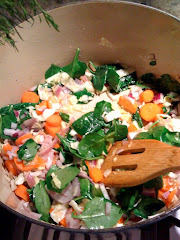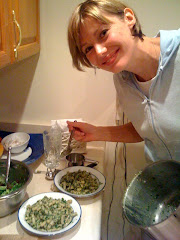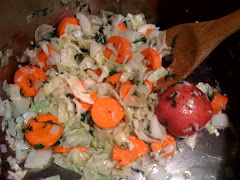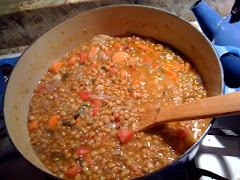
Being Greek means that life generally revolves around food. As a child I remember my grandmother salting the fresh eggplant in the colander preparing it for the pastitsio. We watched and learned from a young age how to use fresh herbs like mint for the spanakopita or lentils; and oregano for just about everything. When visiting the island, Chios, where our family is from, we would go pick our own oregano as it grows wild as a weed in the mountains. The first time I ever saw an artichoke was on its stalk, deep purple and beautiful, in my grandfather’s garden. Really, there is nothing quite like a horiatiko (village) salad of ripe tomatoes, cucumbers, oregano, feta and olive oil. My mouth is watering just thinking about it. My memories are so vivid, colorful and tasty!Today I grow my herbs in pots outside my front porch. I grow oregano, lemon thyme, and sage. I also enjoy hearty lavender and in early spring usually grow dill as well. I cut fresh dill everyday that I can, into fresh greens. This is another traditional Greek salad. It is dressed with olive oil, lemon, and salt. You can add green onion to taste. This salad is so fresh with a distinctive taste, I often get complimented on it. I am so addicted to it that in the winter I cheat and use dried dill.I have three different kinds of basil; large leaf Sweet Italian, large leaf purple called Red Rubin Basil, and the small leaf Greek called Minette Basil. I tend to not allow them to flower as the leaves become bitter once it goes to seed. In winter I bring them inside to a sunny spot and keep them year-round. I trim the basil plants monthly in summer and enjoy a fresh pesto on those days. In the food processor or mini chopper, I put the leaves of all three types of basil (as many leaves as can fill the processor bowl), about a half cup of olive oil, ¼ cup freshly grated parmesan or piave cheese, 2-3 cloves garlic, and sometimes pine nuts, if I have them. You have to experiment with the amount of olive oil, because the pesto can be too dry if there’s not enough. The leaves tend to absorb it. It goes superbly on fresh, hard crusted semolina bread, although in our house we just eat it by the spoon.Interestingly enough, Greeks don’t eat basil the way Italians do. (I’m half Italian, by the way). Basil has theological significance to the Greek Orthodox Christians. Holy Tradition states that when St. Helen found the True Cross of Christ, she knew it because Sweet Basil was growing around it. On September 14th in Orthodox Churches around the world, old grandmothers (Yiayias) bring their basil to church to adorn the cross that the Priest will use in a procession with around the church. Then the Priest blesses everyone with the cross and with the basil. The women then take home the now blessed basil to make bread that will be used for Holy Communion. They mix salt, flour and water and make their dough. Then they make the sign of the cross with their blessed basil over the dough and miraculously, the dough rises without yeast! This is done every year all over Greece. As you can see, herbs are very important in the Greek culture. It really is a part of life. My house is not a home with out my potted herbs on my front porch.














No comments:
Post a Comment